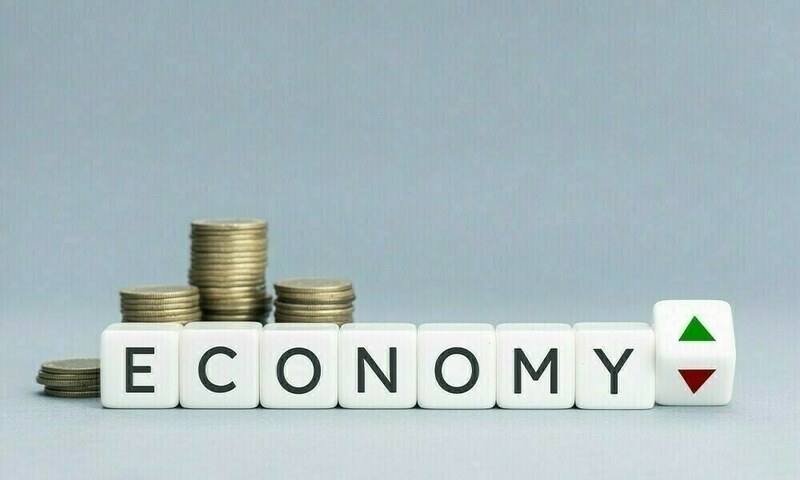ISLAMABAD: The updated GDP growth rate for the financial year 2024-25 stands at 3.04 percent, up from the earlier estimate of 2.68 percent, primarily due to a robust 5.66 percent growth recorded in the fourth quarter of the outgoing year.
According to updated figures approved by the National Accounts Committee (NAC) on Wednesday the overall size of the economy increased by USD35 billion to USD407.2 billion, while per capita income rose to USD1,812.
The 114th meeting of the National Accounts Committee (NAC), chaired by Secretary of the Ministry of Planning, Development & Special Initiatives Awais Manzur Sumra, approved the revised quarterly GDP growth rates for the first, second, third, and fourth quarters of FY 2024-25, along with updated annual growth
Based on the latest national accounts aggregates for FY 2024-25, the economy’s overall size stood at Rs113.7 trillion ($407.2 billion), compared to Rs105.2 trillion ($371.8 billion) in the preceding year.
Per capita income was recorded at Rs506,188 ($1,812). However, per capita income data from 2016-17 onward will be revised after the integration of new population projections from the 2023 Census.
The GDP growth rates for the first three quarters of FY 2025 were also revised upwards: from 1.37pc to 1.80pc in Q1, 1.53pc to 1.94pc in Q2, and 2.40pc to 2.79pc in Q3. These revisions largely stemmed from higher agricultural benchmarks, which improved growth in the sector from 0.84pc to 1.55pc in Q1, 0.79pc to 1.97pc in Q2, and 1.18pc to 2.36pc in Q3.
The industrial sector also saw upward revisions owing to benchmark adjustments, moving from negative growth in the first three quarters to positive figures: from -0.91pc to +0.32pc in Q1, -0.99pc to +0.21pc in Q2, and -1.14pc to +1.23pc in Q3. Meanwhile, the services sector experienced slight improvement in Q1 from 2.28pc to 2.36pc but faced downward revisions in Q2 (2.59pc to 2.45pc) and Q3 (3.99pc to 3.45pc).
The economy posted robust growth of 5.66pc in Q4 of FY 2025, with agriculture, industry, and services growing by 0.18pc, 19.95pc, and 3.72pc respectively.
Despite a 17.55pc decline in important crops, other crops surged by 17.99pc, buoyed by double-digit production increases in green fodder (14.2pc), onions (12.6pc), and mangoes (26.4pc). Livestock, forestry, and fishing sectors also registered positive growth at 1.44pc, 3.60pc, and 2.23pc respectively.
Contrasting the first three quarters, the industrial sector witnessed a healthy 19.95pc growth in Q4 compared to a contraction of 3.06pc during the same period last year.
All sub-sectors contributed positively, including mining and quarrying (+1.94pc), large-scale manufacturing (+2.96pc), and electricity, gas & water supply, which surged by 121.38pc due to higher subsidies, a decline in the deflator, and a low base effect from last year’s -31.59pc contraction. The construction sector also saw a strong performance with 17.65pc growth, supported by increased cement production and greater government infrastructure spending.
Services grew by 3.72pc in Q4, with all sub-sectors contributing positively: wholesale and retail trade (+2.08pc), transportation and storage (+4.06pc), information and communication (+3.13pc), finance and insurance activities (+6.81pc), public administration and social security (+12.87pc), education (+3.71pc), health and social work (+2.51pc), and other private services (+3.03pc).
The committee approved an updated annual growth rate of 2.58pc for FY 2024, marginally higher than the earlier estimate of 2.51pc. Agriculture remained steady at 6.40pc, industry improved slightly from -1.37pc to -1.19pc, supported by upward revisions in electricity, gas, and water supply (-19.86pc to -19.10pc), while services rose from 2.19pc to 2.25pc, led by better performance in transportation and storage (1.65pc versus 1.51pc).
The revised growth projections for FY 2025 indicate agriculture at 1.51pc, industry at 5.26pc, and services at 3.0pc, up from previous estimates of 0.56pc, 4.77pc, and 2.91pc respectively.
While important crops slightly improved from -13.49pc to -13.12pc, other crops showed marked gains from 4.78pc to 19.55pc, driven by strong production growth in green fodder (16pc), vegetables (12pc), fruits (10pc), and tobacco (25.7pc). Livestock growth slowed to 2.94pc from 4.72pc due to increased fodder inputs. Forestry and fishing also posted positive growth rates of 2.66pc and 1.40pc respectively.
Industry’s updated growth of 5.26pc for FY 2025 reflects improvements in mining and quarrying (from -3.38pc to -2.35pc) owing to increased output in oil (3.5pc), limestone (31.6pc), marble (11.6pc), and exploration costs (26.1pc).
Large-scale manufacturing showed gains with a reduction in decline from -1.53pc to -0.69pc, supported by growth in beverages (1.61pc), tobacco (6.99pc), textiles (2.49pc), wearing apparel (5.7pc), coke and petroleum (5.33pc), pharmaceuticals (2.74pc), automobiles (46.15pc), and transport equipment (36.6pc).
However, declines persisted in food manufacturing (-1.83pc), chemicals (-2.46pc), non-metallic mineral products (-7.88pc), iron and steel (-8.7pc), machinery and equipment (-35.46pc), and furniture (-56.3pc). Electricity, gas, and water supply saw a slight decrease to 28.53pc from 28.88pc, mainly due to lower output from Wapda, companies, and renewable sources. The construction sector improved marginally from 6.61pc to 6.63pc, aided by increased provincial government spending on construction.
The services sector also improved from 2.91pc to 3.0pc, with wholesale and retail trade rising to 0.46pc from 0.14pc on the back of gains in agriculture, manufacturing, and imports. Transport and storage increased to 2.43pc from 2.20pc, driven by upward revisions from NTRC, PIA, domestic airlines, CAA, foreign airlines, KPT, and storage activities.
Information and communication declined slightly from 6.48pc to 5.85pc, while finance and insurance grew from 3.22pc to 3.90pc due to better performance in the insurance industry.
Other components of services – public administration and social security (9.88pc), education (4.13pc), human health and social work (3.56pc), and other private services (3.49pc) – remained on a positive trajectory despite minor downward adjustments.
The committee lauded the efforts of the National Accounts team at the Pakistan Bureau of Statistics and key stakeholders including the Ministry of Planning, Development and Special Initiatives, Ministry of Finance, and the State Bank of Pakistan in preparing the quarterly and annual GDP estimates.
Copyright Business Recorder, 2025


